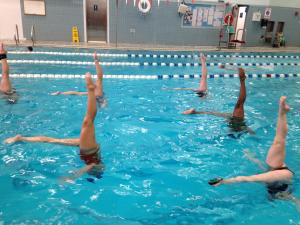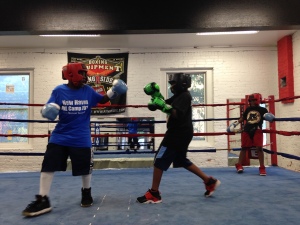The power of youth sports, at different spots along the economic spectrum
Posted: October 2, 2014 Filed under: Uncategorized Leave a comment »There are some things that are constant, no matter where on the economic ladder people find themselves. And it can be telling to look at the differences, and the commonalities.
Two stories on WSHU recently have looked at very different experiences in youth sports.
First, we visited the YMCA in the wealthy town of New Canaan, Connecticut, to see middle school and high school girls compete in one of the top teams in the country in… synchronized swimming.Synchro, as they call it, is certainly not your usual after school sport. And that’s part of why these girls love it so much.
Here’s Craig LeMoult’s story on the team.
You can see video and a photo slideshow of the synchro team here.
One reason you don’t see a synchronized swimming team in every town might be the expense. One coach estimated the cost could average $10,000 to $12,000 a year, including coaching fees, a lot of travel, and of course glittery bathing suits. And those bathing suits don’t just glitter themselves. Parent involvement is key – one swimmer said her mother spent hours applying that glitter. One family moved to Connecticut from Pennsylvania so that their daughter could train on the New Canaan team.
On the other end of the spectrum, we checked out a gym in the Dixwell neighborhood of New Haven, where former Golden Gloves champ Devonne Canady is teaching kids between the ages of 8 and 12 to box. The gym is named the Elephant in the Room Boxing Club. To Canady, the “elephant in the room” is gun violence. She’s teaching boxing to keep these kids off the streets where they can be hurt, and to keep them focused on something positive so they don’t go down the wrong path. Here’s Craig’s story:You can see video and a photo slideshow of the boxers here.
“I grew up right here,” Canady said. “And unfortunately, the children in this neighborhood, this particular neighborhood, there isn’t a lot for them. There isn’t a rec center. There’s barely parks. If there’s parks, there’s no swings. There’s not a soccer field.”
Canady charges $20 a month to train a kid in the gym, and she’s willing to be flexible if that’s too difficult for families.
Of course, there’s a lot that’s different about the Y synchro team and the Elephant in the Room Boxing Club. First of all, there’s the background the kids are coming from. It’s the difference between providing a sport that will look good on a college application and coaching one to prevent kids from being shot. And it’s the difference between $12,000 a year and $240 a year.
And sure, there are plenty of other differences. But despite all that, it’s the similarities that are the most striking. Both sports require a significant time commitment and hard physical work from the kids. All that time and work is aimed at improving an ability that’s equal parts strength and style. Both sports teach kids the importance of discipline and focus. Both are coached by passionate women who are driven to see the kids perform their best.
And, hopefully, both will lead to kids who grow up stronger, smarter and more ready to succeed – whether it’s in a ring, in a pool, or anywhere else.
(WSHU’s Craig LeMoult reported the two stories mentioned, and wrote this post. He’s the founder of State of Disparity)



Recent Comments